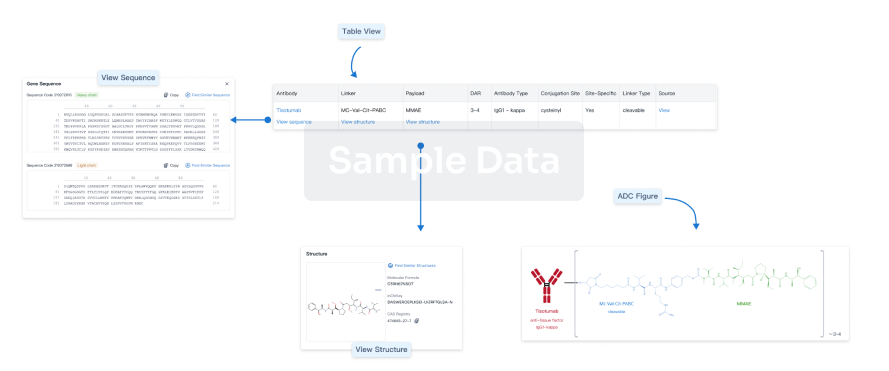Request Demo
Last update 21 Aug 2025
Alfatide[18F]
Last update 21 Aug 2025
Overview
Basic Info
Drug Type Peptide Conjugate Radionuclide, Diagnostic radiopharmaceuticals |
Synonyms (18)F-AlF-NOTA-PRGD2, 18F-AlF-NOTAE[PEG4-c(RGDfk)]2, 18F-Alfatide II + [5] |
Target |
Action antagonists |
Mechanism αvβ3 antagonists(Integrin alpha-V/beta-3 antagonists) |
Therapeutic Areas |
Active Indication |
Inactive Indication- |
Originator Organization |
Inactive Organization- |
License Organization |
Drug Highest PhasePhase 3 |
First Approval Date- |
Regulation- |
Login to view timeline
Structure/Sequence
Molecular FormulaC93H146AlFN24O31 |
InChIKeyWUGBBIVPEQZTOB-LKQFREDSSA-K |
CAS Registry- |
Boost your research with our ADC technology data.
login
or

Sequence Code 1507071

R&D Status
10 top R&D records. to view more data
Login
| Indication | Highest Phase | Country/Location | Organization | Date |
|---|---|---|---|---|
| Non-Small Cell Lung Cancer | Phase 3 | China | 10 Dec 2021 | |
| Non-Small Cell Lung Cancer | Phase 3 | China | 10 Dec 2021 |
Login to view more data
Clinical Result
Clinical Result
Indication
Phase
Evaluation
View All Results
Not Applicable | - | - | btqxjrwctv(aortcjvuzz) = Metabolic uptakes of thyroid (SUVthyroid), liver (SUVliver), cardia (SUVcardia), stomach body (SUVstomach body), stomach pyloric portion (SUV stomach pyloric portion) and spleen (SUVspleen) were predictive for fatigue wkljcdpdty (sozmsdwbdk ) View more | - | 23 May 2018 |
Login to view more data
Translational Medicine
Boost your research with our translational medicine data.
login
or

Deal
Boost your decision using our deal data.
login
or

Core Patent
Boost your research with our Core Patent data.
login
or

Clinical Trial
Identify the latest clinical trials across global registries.
login
or

Approval
Accelerate your research with the latest regulatory approval information.
login
or

Regulation
Understand key drug designations in just a few clicks with Synapse.
login
or

AI Agents Built for Biopharma Breakthroughs
Accelerate discovery. Empower decisions. Transform outcomes.
Get started for free today!
Accelerate Strategic R&D decision making with Synapse, PatSnap’s AI-powered Connected Innovation Intelligence Platform Built for Life Sciences Professionals.
Start your data trial now!
Synapse data is also accessible to external entities via APIs or data packages. Empower better decisions with the latest in pharmaceutical intelligence.
Bio
Bio Sequences Search & Analysis
Sign up for free
Chemical
Chemical Structures Search & Analysis
Sign up for free



